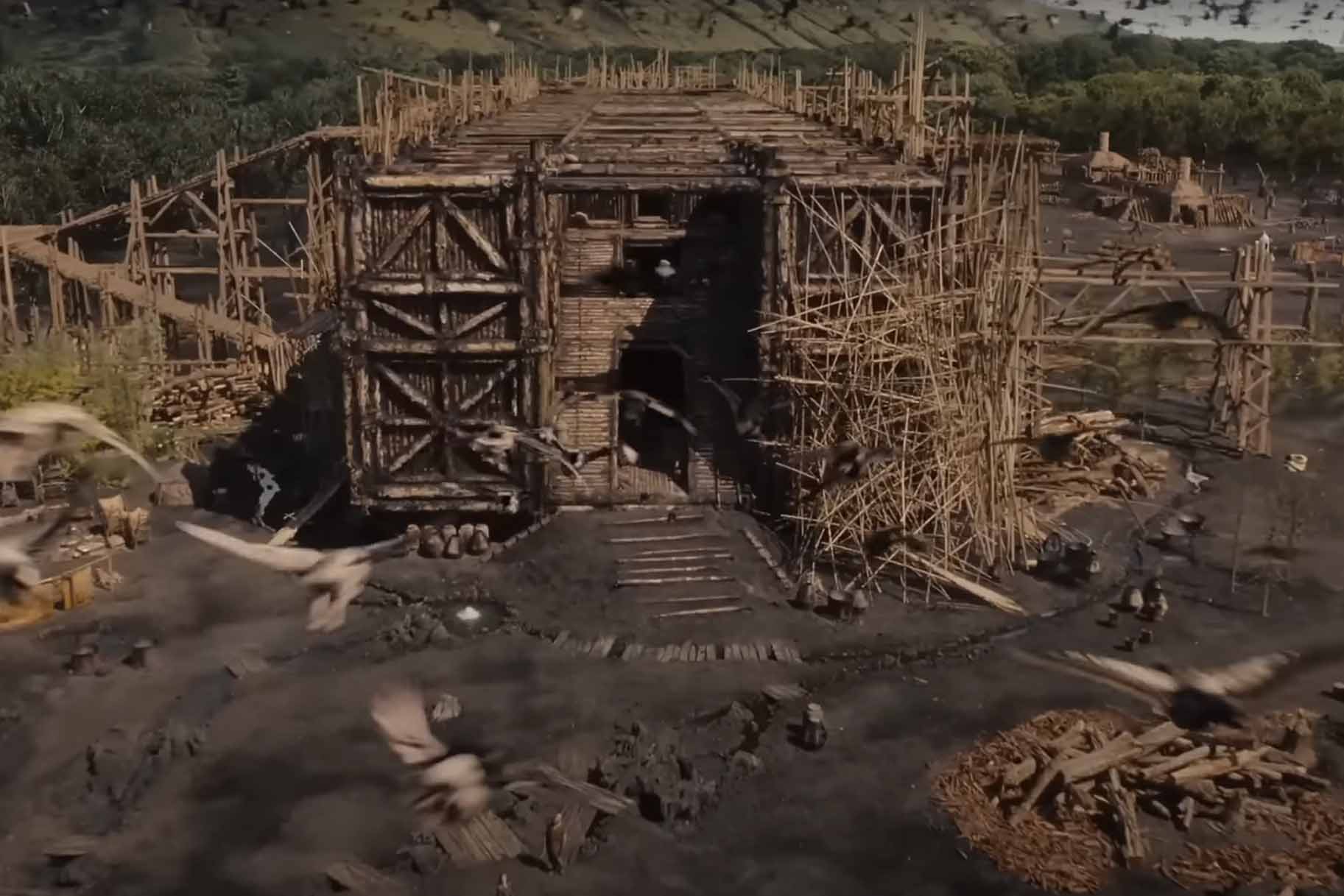Create a free profile to get unlimited access to exclusive videos, sweepstakes, and more!
The Science Behind Noah: How Big Would an Ark Actually Have to Be to Hold Two of Every Animal?
You're gonna need a bigger boat.

The story of Noah and his ark has been passed down for generations and holds a special place in some religious tellings of world history. In 2014, director Darren Aronofsky brought the story to life in a live action adaptation of the biblical story, simply called Noah. Russell Crowe plays the titular character, tasked with building an ark to preserve all earthly life after a global flood.
In the story, God gives Noah precise instructions for how to build a ship capable of carrying at least two of every type of animal on Earth. His ark was to be 300 cubits (525 feet) long, 50 cubits (87.5 feet) wide, and 30 cubits (52.5 feet) tall. It’s worth noting that the precise length of a cubit is variable, as it refers to the length between the measurer's elbow and the tip of their middle finger. For our purposes, we’re using a length of 21 inches (1.75 feet) for each cubit.
That’s a pretty big ship even by today’s standards, but is it big enough? If we wanted to build an ark today, a ship large enough to carry two of every animal, how large would it have to be?
For More Science Behind the Fiction:
Why Sam Raimi’s Peter Parker Should Have Eaten His Webs
How Face Transplants Work: The Science Behind Face/Off
Understanding Perfect Harmony: The Science Behind Trolls Band Together
Building a Modern Noah’s Ark
Let’s assume that all aquatic life has a handle on the situation, they’ll spend the next 40 days swimming slightly larger seas before going back to business as usual. We don’t have to worry about them. What we need is enough space for every terrestrial animal. Of course, some creatures reproduce asexually and even the sexual reproducers sometimes make offspring on their own through a process known as parthenogenesis. If we really wanted to get efficient, we could figure out which critters we need two of and which can go it alone, but parsing all that might be too much to expect from our modern-day Noah, so we’ll make room for two of each.
That requires us to pare down from Noah’s actual mission. In the story, he’s told to take seven pairs of some animals and one pair of others. We’re not going to worry about that and we’re not going to even think about the problems of genetic diversity inherent in bottlenecking every species to one reproducing pair.
We’re also not going to deal with the logistics of finding and moving the animals onto the ark. We’re going to build a ship and trust that our client will take care of the transportation from on high. We know one thing for certain, the scant blueprints laid out in the text won’t produce a boat large enough, not by a long shot.
How Big Would an Ark Have to Be to Hold Two of Every Species?
The number of species alive on the Earth today isn’t precisely known, but it’s definitely fewer than there were in Noah’s day. So, our job should be easier than it would have been in antiquity. There are an estimated 9 million species on Earth today, 6.5 million of which live on land. That’s 13 million individuals to find lodgings for in our ship.
A study from the University of Leicester crunched the numbers on Noah’s cargo and determined that the average weight of the animals onboard was roughly that of a sheep weighing 52 pounds. Jammed together, transport style, each individual would take up an average of 12 cubic feet, and with those numbers we can work out a lower limit on how big the ship needs to be.
Our total volume of animals comes in at a whopping 156 million cubic feet. If we just want to get our animals into a compact space, we can do it with a floating box about 538 feet on each side. A simple volume calculation tells us that Noah’s boat, as described in the text, has a volume of only 2.4 million cubic feet, only enough to hold about 200,000 individuals.
Scaling up the ark to reach a volume of 156 million cubic feet requires a vessel over 2,100 feet (1,200 cubits) long, 351 feet (200 cubits) wide, and 210 feet (120 cubits) tall. With an ark that size, you could fit two of each land animal inside, just barely, but would it float?
Noah’s scaled up ark would have a buoyant force of roughly 9.98 billion pounds, which tells us roughly how much cargo it can hold. A boat only floats if its total weight (including the weight of the vessel itself) is less than its buoyant force. Fortunately for Noah, and for life on our planet, the total weight of 13 million sheep (our analogue for 2 of each animal) is something like 689 million pounds.
It turns out that a ship large enough to hold that many animals is necessarily buoyant enough to float them, but that's no small task. An ark large enough to hold all of the land animals would have to be about 500 feet longer than any ship humanity has ever built before. Doing it today would be a massive engineering achievement; doing it a few thousand years ago would have been a miracle.
Watch Darren Aronofsky’s Noah, streaming now on Peacock.














